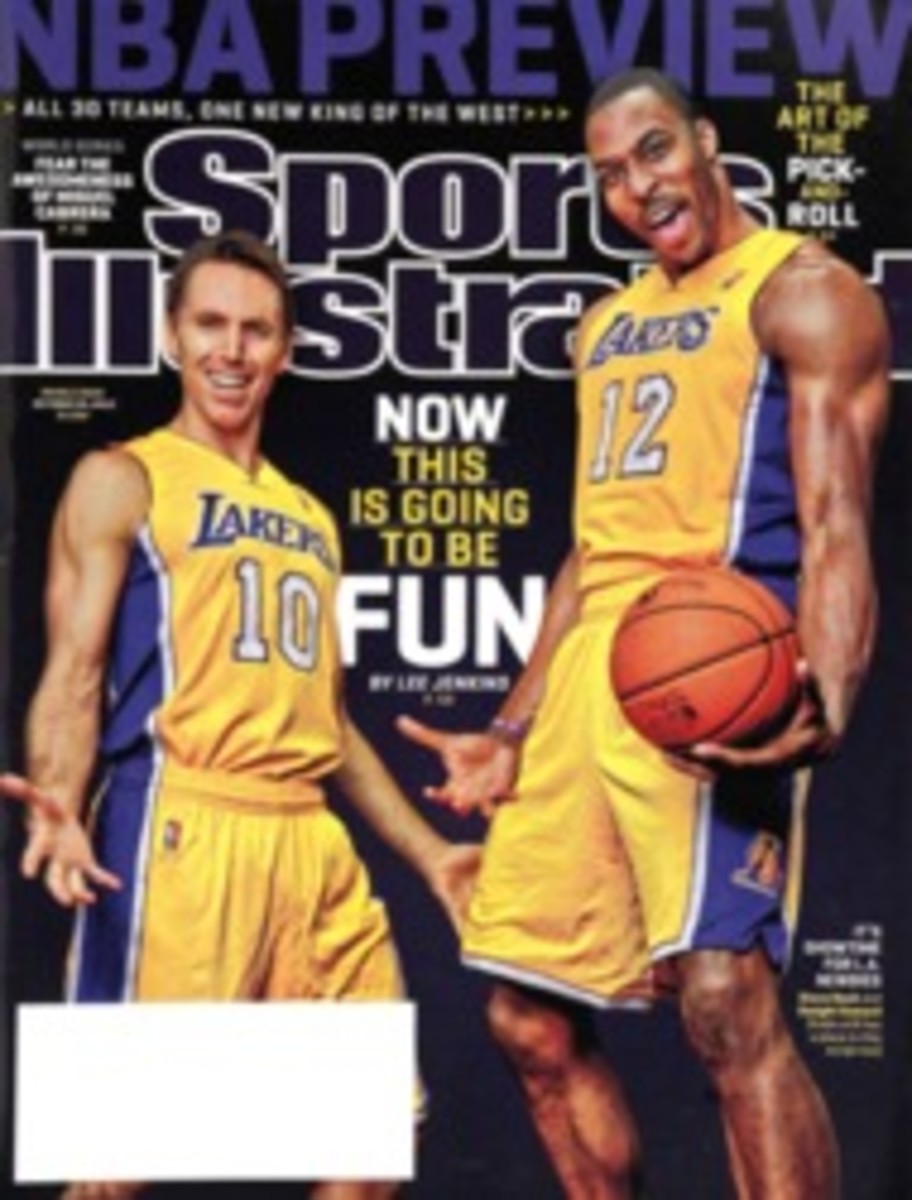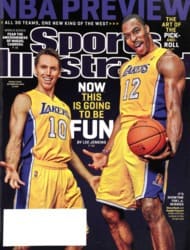
What Will Happen Next
If you work at SPORTS ILLUSTRATED, you have to know the names and dates and numbers, and maybe even how to use abstract expressionism to explain baseball in a new way. I should have been better at this, but there was always someone to help. That's the thing about SI, all the talent its culture nurtures. I know this because I saw it every day for the almost 11 years I had the spectacular good fortune to be the editor. And I see it even more clearly now as I move to a new job and SI buckles in to the new velocity that is souping up that culture. This is much bigger than the disappearance of the legendary drink carts from the Time Inc. editorial floors on closing nights. It arrived with the complete coming together of the magazine and the website, and it felt like climbing into a speed suit. This is not magical thinking.
The magazine has always owned an almost mystical ventriloquism when it comes to presenting the truest voices in sports. At the same time, SI.com is more and more ferocious as a news gatherer and news breaker—not with the simulated reporting and "confirming" that other outlets do to piggyback onto SI stories, but with original reporting of the thickly particled facts that reveal, for example, what really happened at Penn State. The print and the digital platforms complete each other journalistically, with the same swagger, the same audacity, the same soul. That last is a big word, I know, but there really is no other. And I mean it in communion with the patience to sift the residue of all the reporting for consequences and deliver a voice about whatever those consequences are.
New Editor Paul Fichtenbaum (EDITOR'S LETTER, Aug. 27) knows all of this, and he will soar. "This is a revolutionary time and that means transformation," he says. "Building on our extremely solid foundation, we will deliver the kind of journalism, across all platforms, that our readers have come to associate with SI for nearly 60 years."
Also stepping up is Chris Stone, who will be the new managing editor of the magazine. He started at SI in 1992 as a reporter for then senior editor Fichtenbaum on the hockey beat. His responsibilities as an editor over the decade we have worked together have been eclectic: MLB, NBA, SI ON CAMPUS, Swimsuit. He ran all those beats, and he is also particularly good at clarifying complicated ideas on a printed page. And then pushing it out to other platforms. You'll see.
THE WEEK BEFORE I began to edit SI, I traveled to the 2002 Winter Olympics in Salt Lake City to meet wary soon-to-be colleagues. The cover that week was a 17-year-old LeBron James behind the billing THE CHOSEN ONE. I was quietly critical of the choice. The American snowboarders were dominating, and I was all about change ... not just another basketball phenom.
It was a good lesson.
Change comes at many speeds, and it is usually good. But it is always best in view of a long future, or the Long Now as it is called when it echoes the need for responsible long-term thinking. The Long Now is also the name of the brilliant foundation proposing to build a clock in the mountains of eastern Nevada that will keep time for the next 10,000 years. Or so. Back 10,000 years we were hunting and gathering in animal skins. The framework I am talking about here is not that long, but still ... LeBron came a long way in 10 years.
When I moved into my office at SI, I displayed a football helmet on one of my bookcases. I now understand that some of my new colleagues thought it was my helmet because it had MCDONELL on a piece of tape across its front. I avoid pondering what else might have occurred to them about a new editor showing off an old helmet, especially a dinged-up one, with rows of stars, the kind you see representing significant plays or hits.
It was the eighth-grade helmet of my oldest son, and I looked at it every day until last week, when I packed it for the move to a new office. This was almost the same day I looked at a new survey by the youth sports organization i9 Sports reporting that, despite increasing awareness about the dangers of concussions, nine out of 10 fathers who played football at the high school level or higher and suffered, or believe they suffered, a football-related concussion still want their children to play the game. I love football, and I get that. It feels impossibly dated, like the fossil record of an ancient species not quite evolved enough to make it, but I get it.
So I step back from editing SI with some worry, not for our journalism but for the sports we cover. Are we really taking long-term care of our hard, beautiful games?
YOU WILL HEAR a lot about where our sports are going from Fichtenbaum and Stone, which is good because they are variously sly-witted and ironic and hilarious, but most important they will tell you the truth, just as SI has always done. Everyone tries to do that, right down to the most hysterical blogger, but to tell the truth, you have to recognize it. And sometimes you have to dig for it. Paul and Chris will dig.
Sports can feel too big, too outsized and bloated for its running depth. Just tip over into one endless Super Bowl halftime. It can also seem small, tiny even, and shrinking into its lowest denominator of narcissism like A-Rod kissing himself in the mirror. But there is also always a story of redemption, a story that makes sports matter more than you imagined they could. SI will always tell those stories.
When it comes to head trauma, SI has pushed transparency and reform since we broke the story "Too Many Punches, Too Little Concern" in 1983. The same goes for civil rights and human dignity on every level of every game we play. All of which inches us toward that Long Now.
See you there.
FOLLOW @SI_TMcDonell
PHOTO
MEL LEVINE (MCDONELL)
PHOTO
ERICK W. RASCO (HELMET)

